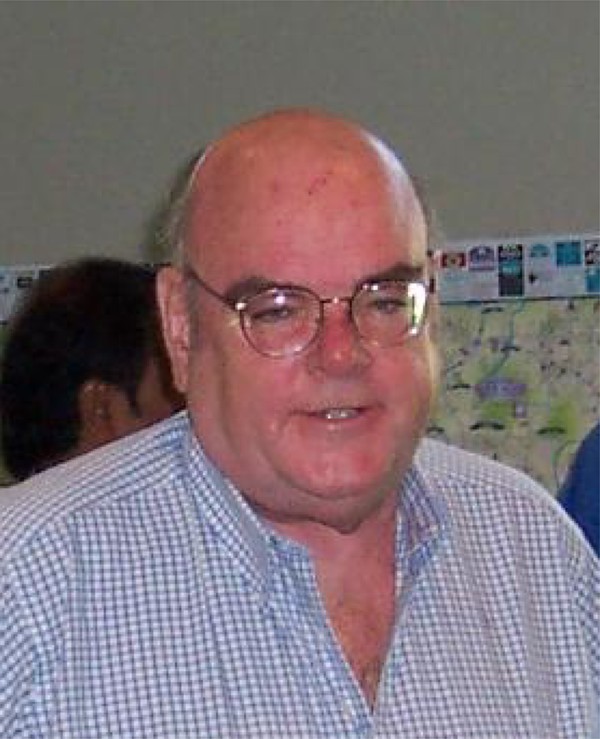
Malcolm F. Nicol 1939–2009
Malcolm F. Nicol, a long-time and highly regarded member of the High Pressure Community, passed away on May 7, 2009. Nicol was a Professor and Member of the Faculty Senate, and the Founding Executive Director of the University of Nevada at Las Vegas (UNLV) High Pressure Science and Engineering Center (HiPSEC), which he founded in 1998. Malcolm received his PhD in Chemistry in 1963 from the University of California, Berkeley. His PhD thesis was entitled ‘The effect of very high pressure on the Mössbauer spectrum of Fe57 in iron metal’. After completing his degree, Malcolm joined the Faculty of UCLA's Department of Chemistry and Biochemistry, eventually rising to Professor.
In the late 60s and early 70s, Nicol was the first to develop Raman spectroscopy in a diamond anvil cell. Starting around 1980, he made numerous significant contributions to the expansion of the oxygen phase diagram. In the mid 1980s, Malcolm pioneered studies of reaction kinetics of organic materials in shock experiments, whilst working at the LLNL Branch of the University of California Institute of Geophysics and Planetary Physics. At UCLA he undertook development of spectroscopic temperature measurements in the diamond anvil cell.
In the 1990s I served with Malcolm on an External Review Committee of the National Institute for Research in Inorganic Materials in Tsukuba, Japan. He had a very analytical mind on all aspects of science. Malcolm's insights were very valuable contributions to those reviews.
From 1999 to 2007 Malcolm was Treasurer of the International Association of High Pressure Science and Technology (AIRAPT). He was the only person to have served four terms in that post. I had the pleasure of working with him in this regard from 2003 to 2007. Malcolm was skilled at working financial issues and extremely conscientious. I once sent him an inquiry via email, which he answered about two weeks later. He apologized for taking so long to respond but he had been in the hospital, a matter of much greater importance, I assured him, than whatever my question was.
The UNLV HiPSEC was supported by the US Department of Energy, National Nuclear Security Administration. The Center brought together chemists, mechanical engineers, and physicists to work on fundamental experimental, computational, and engineering problems of materials under high static pressure. Materials studied included d- and f-band metals, energetic materials and their detonation products, foams, hydrogen and other low-Z elements and their compounds. Measurements included X-ray diffraction, optical absorption, emission, and scattering spectroscopies from infrared to X-ray wavelengths. HiPSEC also encompassed shock experiments at the Lawrence Livermore National Laboratory, Los Alamos National Laboratory, and Sandia National Laboratory Albuquerque. The Center recovered shocked samples for chemical, physical, and mechanical analysis. Theoretical and computational studies focused on highly correlated and ‘warm’ condensed matter systems. HiPSEC is a member of the High Pressure Collaborative Access Team (HPCAT) at the Advanced Photon Source of Argonne National Laboratory.
Reini Boehler worked with Malcolm over a span of many years. Reini remembers “great times during our first synchrotron measurements at the HASYLAB in Hamburg. This collaboration with him shaped my career significantly. To all of us, Malcolm was known for his warm and kind character and for his deep scientific insight”.
Ike Silvera also has warm remembrances of Malcolm. Once, when a cancellation of a flight stranded Ike in Las Vegas, Ike called Malcolm to say hello. Malcolm took Ike out to dinner and gave him a tour of his laboratory. Malcolm was always a great host who liked to talk about everything from science to politics over a good dinner.
Andrew Cornelius was the first external hire into HiPSEC. Malcolm was a great mentor and an endless source of encouragement. In the decade that Malcolm was at UNLV, he was a major driving force behind the growth in research activity (research funding nearly quadrupled while peer reviewed articles doubled). “He will be missed, but his legacy at UNLV will not be forgotten”.
Michael Pravica worked with Malcolm at UNLV. Malcolm's office was always open and he had many visitors. Malcolm was a treasure-trove of information with a breadth and depth of knowledge in many fields. As Michael said at the 2009 AIRAPT conference, “his jovial, positive, and ubiquitous presence will be sorely missed”.